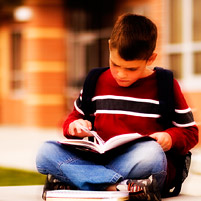Analyzing Autism

Researchers in the School of Computer Science at Carnegie Mellon University will join a five-year, $10 million initiative funded by the National Science Foundation (NSF). The purpose of the initiative is to create novel tools for evaluating social interactions and other behaviors that can be used in diagnosing or treating behavioral disorders such as autism.
"Using technologies such as computer vision and machine learning programs, we will develop new methods for gathering clues about a child's behavior that could lead to a diagnosis of autism at an early age, when therapy is most effective," said Anind Dey, associate professor in Carnegie Mellon's Human-Computer Interaction Institute. "Some of this information can be collected in clinics, but we hope some can be gleaned from as-yet untapped sources, such as the home videos that parents make all the time."
The Computational Behavioral Science Project — part of the Expeditions in Computing Program of the NSF's Directorate for Computer and Information Science and Engineering (CISE) — includes collaborators from the University of Illinois at Urbana-Champaign (UIUC), the University of Southern California, Boston University and the Massachusetts Institute of Technology, with the Georgia Institute of Technology serving as the lead institution.
Takeo Kanade, the U.A. and Helen Whitaker University Professor of Robotics and Computer Science, will lead an effort at Carnegie Mellon using computer vision to automatically analyze videos, amateur or otherwise, for early signs of autistic behavior. Eye gaze, facial expressions and body posture are among the visual aspects of social engagement that could be analyzed.
"We aim at developing a new suite of technologies for imaging and understanding human behaviors, or behavior imaging," Kanade said. "Just as medical imaging revolutionalized medicine and science for the body and its actions, behavior imaging will revolutionalize medicine and science for the mind and its activities."
Other collaborators in the project will develop methods for analyzing speech and will develop wearable sensors and toys-as-sensors that can further enhance data gathering.
Meanwhile, Dey will work with colleagues in human-computer interaction at Georgia Tech and UIUC to develop methods for making sense of the data being generated by these new tools.
"Educators, family members and clinicians all have different needs and interests and will want to have this data interpreted in a way that makes sense to them," Dey said.
Outreach activities will include ongoing collaborations with the Center for Excellence in Autism Research at the University of Pittsburgh, as well as major autism research centers in Atlanta, Boston, Urbana-Champaign, Ill., and Los Angeles.
Autism, which affects one out of every 110 children in the United States, represents a particularly compelling need for new methods of gathering behavioral data. But the long-term goal of the NSF-sponsored project is to develop a new discipline of computational behavioral science, which will draw equally from computer science and psychology to transform the study of human behavior.
Related Links: Carnegie Mellon | School of Computer Science
